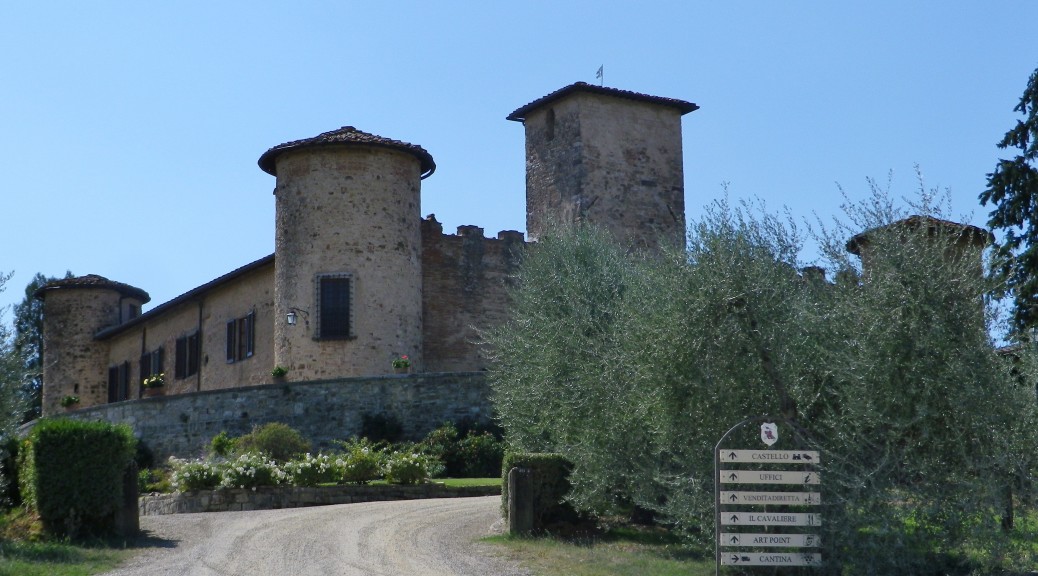The name seemed familiar, one I thought I’d seen on a Chianti wine bottle label, which sports a colorfully dressed knight on horseback. So I followed the signs and found an impressive looking castle (now housing a hotel), a great wine shop, and a fabulous restaurant. Much to my delight, I also found another trail through an estate’s vineyards in Chianti territory! Trails are a rarity here. So, changing my shirt and shoes, along with my plans for the day, I seized the opportunity to follow another trail through a Chianti estate.
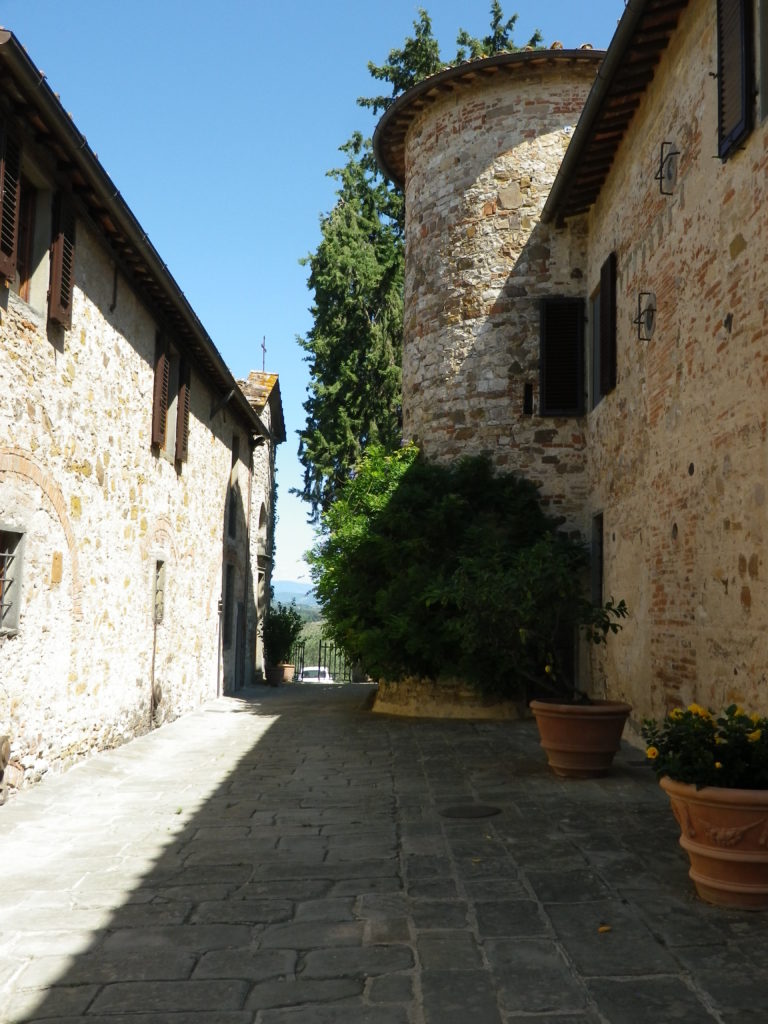
This was a short and simple circuit trail, essentially following the edges of the estate. The castle and its outbuildings served as the nucleus; vineyards and olive groves surrounded it. Nonetheless, this trail held my interest for three reasons.
First, the slopes of the hills were steeper than I had expected, and multiple ridgelines lead off them. (In fact, the castle quickly disappeared from view, as the angle of the trail dropped.) Certainly this is an advantage for cultivating grapes, allowing for rain water run-off. As the direction of the slopes change, so too did the direction of the rows of vines. These are two things visitors might not always note speeding along by car.
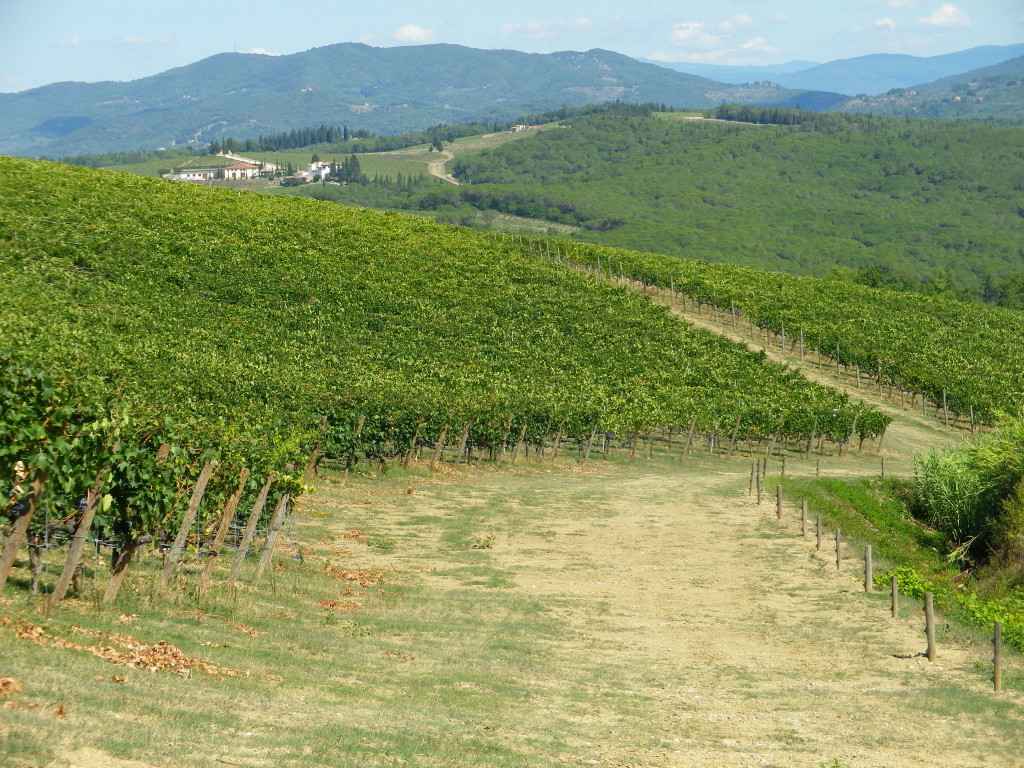
Second, there were beautiful views. The highest point of this walk was above the restaurant, marked as Belvedere on the map. From there, the views north took in the scene of the dramatic Alpi Apuane, a section of the Apennine Mountains, sharply delineated in the distance against a clear blue sky. To the northeast, this same spot overlooked the valley of the Greve River, as it twisted its way through the Passo dei Pecorai on its way from Greve, a town of the same name popular with enotourists. Turn a bit to the right to see impressively high hills, cultivated on the lower reaches of the slopes, and all tree-covered on the tops. This is the classic landscape of the Chianti Classico region.
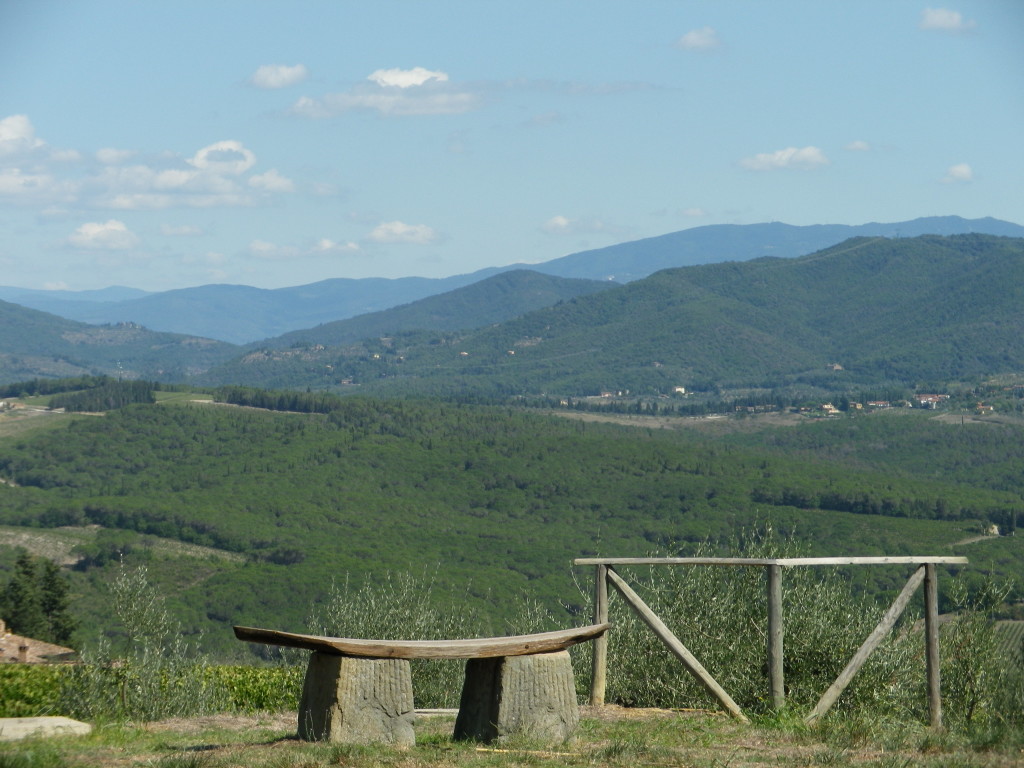
Equally interesting to see and photograph were the views of the groves of old olive trees. Old, gnarled trunks contrast darkly with their glinting silver-green leaves. The Chianti area is truly an agricultural area, famous for its olive oil as well as its wine. This walk helps visitors to appreciate that. Walking along, the distant views of Chianti resemble a patchwork quilt made up of (relatively) small vineyard areas (except for this estate’s), clusters of olive groves, and forests. These last are usually harvested for wild boar, a specialty of the region.
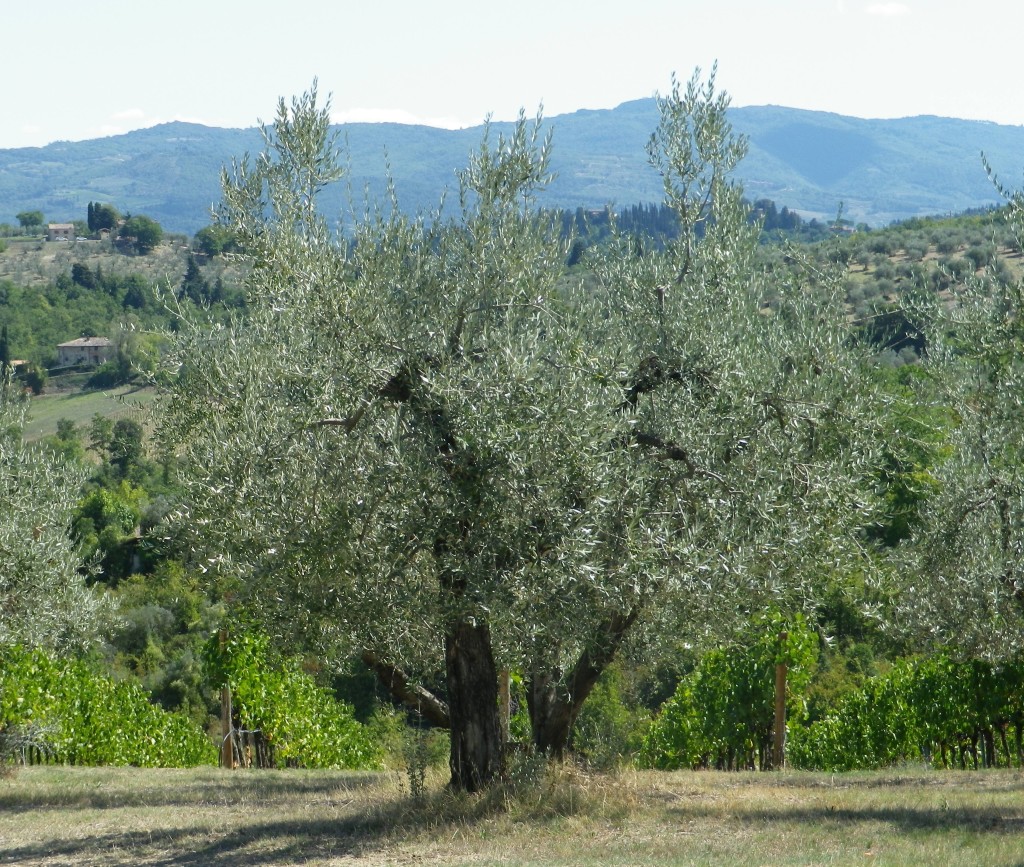
Finally, the walk itself begins and ends at the classic-looking castle. It originated in the 11th century, and has not only managed to maintain a suitably medieval air, but has a lovely terrace around it. The old buildings, with their rough stone, the climbing vines, and the old cypresses make it an ideal spot to admire the simple beauty found in daily surroundings in this area of Chianti Classico.
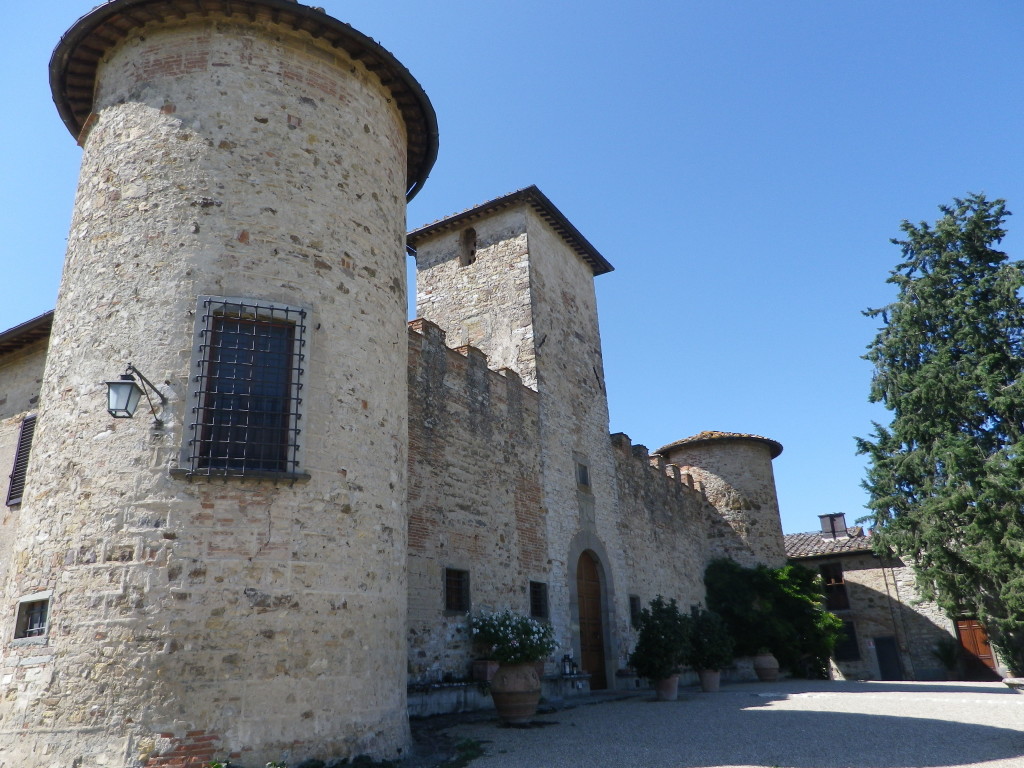
Returning in the evening, it was time for the dolce fa’ niente experience. The leisurely dinner on the restaurant terrace was a magical gastronomic experience. After the wine tasting, I knew which wines I wanted, and savored them and the delicious food. Looking out over the vineyards I had hiked earlier, the sun slowly set, and the lights from Florence began to light up the sky. The classic end of a truly unforgettable, but totally unexpected, day in Chianti!
